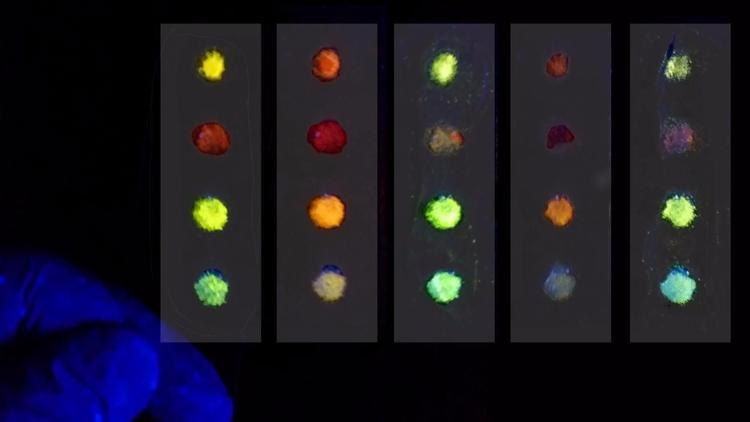Apr 17 2017
Contamination of heavy water by trace amounts of regular water is detectable by a novel sensor technology, according to a study led by University of Texas Austin scientists.
 A sensor platform that can detect minute quantities of contaminants, including traces of regular water in heavy water, has been developed by a team led by University of Texas Austin researchers. (Sam Dunning and David Steadman)
A sensor platform that can detect minute quantities of contaminants, including traces of regular water in heavy water, has been developed by a team led by University of Texas Austin researchers. (Sam Dunning and David Steadman)
Heavy water is most known for its role in some nuclear reactors. It’s also used in chemical analysis and medicine, including production of a recently approved drug for Huntington’s chorea.
Heavy water is nearly chemically identical to regular water, so determining the purity of heavy water is an extraordinarily difficult task, according to the study, published Thursday in the journal Chem. An expert not involved in the research called the results “stunning.”
Moreover, the solid state technology allows for identifying other chemicals by creating a unique barcode of color and brightness. The crystals could be incorporated into paper dipsticks that give a fluorescent read-out on unidentified substances, according to a statement from UT Austin a that focused on its potential applications for public health.
The technology employs crystals of lanthanide ions and triphenylphosphine, known as metal-organic framework (MOF) materials. This technology has wide applications. It was used to pull water out of dry air in another study, also published Thursday, by UC Berkeley scientists.
The UT Austin study said its MOF material can measure trace levels of regular water from 10 to 120,000 parts per million of heavy water. It can be found at j.mp/heavywat. Simon M. Humphrey is senior author. Samuel G. Dunning, Ana J. Núñez and Matthew D. Moore are first authors. All are of UT Austin.
The detection of such small amounts of regular water in heavy water provides a “stunning” example of the power of MOF technology, said Jeremiah J. Gassensmith of UT Dallas.
“MOFs are essentially solid molecular sponges, which allow them to soak up a lot of solvents and gases,” Gassensmith said by email.
“In fact, the amount of stuff these solids can soak up is often the volume or weight of the material itself, making them ideal sensors, since they can expose every reactive surface to many, many analytes at once.”
“What Humphrey has done here is make a series of these materials that are slightly different and thus they respond slightly differently to each analyte,” Gassensmith wrote. “Individually, a single one of these sponges may not have much to say, but together, they create a barcode of sorts that can tell a lot about the composition of solvents.”
The readout part of the technology is also impressive, Gassensmith said.
“Technology based on color is great because it is human readable, and if our eyes aren’t completely able to decipher it, most cell phone cameras are at a point they’d work.”
“Right now, a lot of these sensing problems, including distinguishing D2O from H2O, rely on expensive analytical instrumentation like mass spectrometry even for a quick approximation. That may still be the case for final confirmation, but anything we can do to get a quick preliminary test into the field helps.”
Source: http://www.sandiegouniontribune.com/